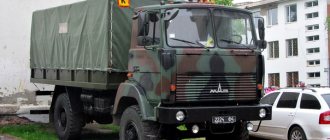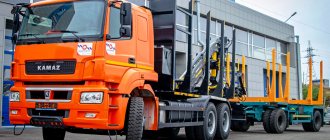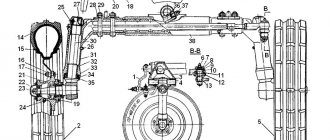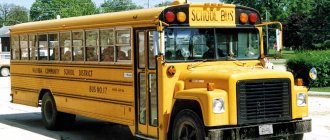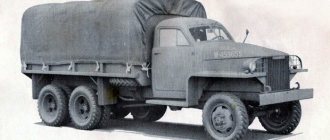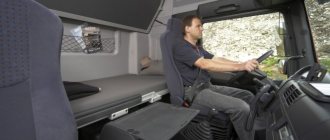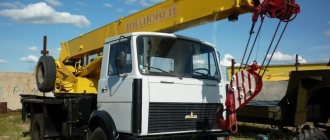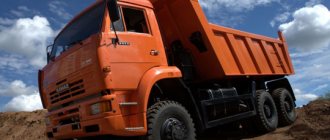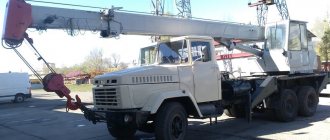Against the background of the general deterioration of the economy due to the COVID-19 pandemic, the logging industry, as one of the export-oriented natural resources, looks promising in terms of rapid recovery. Today we take a look at the players in the forestry crane market, focusing on intelligent systems and features that improve operator and machine productivity and safety. After all, the future of technology lies in intelligent control.
What work is performed using special equipment?
Those who have never been involved in timber removal believe that the entire procedure consists of loading, transporting and unloading logs. However, things are completely different. First of all, the timber truck needs to get into the area where the logs are located. Sometimes this is much more difficult to do than transporting the timber to its destination. Most often, logs are transported using a special all-terrain vehicle, since wood is cut down, as a rule, in hard-to-reach places.
Renting a timber truck with a hydraulic manipulator will allow you to avoid problems associated with loading timber, since this type of equipment can independently perform this function, without the involvement of another type of equipment.
After loading, all that remains is to carefully and accurately remove the logs. Renting a timber truck with a hydraulic manipulator will also help here, because by renting the equipment for a while, the client receives an experienced driver who is accustomed to driving such equipment, and, therefore, can easily cope with any difficult paths.
Operation "timber rafting" (part 1)Lumber transport vehicles
Part 1 Part 2
The heroic timber rafting has sunk into oblivion, as has a good half of the forest harvest that was regularly sinking to the bottom, and “rafting” now rather means getting rid of than moving. But since transportation and distribution are inextricably linked, why not bring back the old forestry term to mean “transportation”? And modern timber trucks are so large that, moving in lines along the roads, they look like those same rafts from the distant past.
Perhaps the word “body” is least suitable for timber transport vehicles; the paired pins protruding from the frame look more like what’s left of the body. Indeed, cover these bunkers in a circle with sheet iron, and the result will be exactly the huge dump bunker of some scrap truck. However, we have been using a dump truck as a universal transport for wood removal since ancient times. What’s easier is to place four logs vertically on the sides, remove the tailgate, manually throw the logs into two bodies high - and off you go! Why, one might ask, during a crisis, when there are a lot of dump trucks idle, drivers and just burly men without work, talk about specialized timber transport?
But it only seems that if the buyer’s order was delivered on two dump trucks instead of one log truck with a trailer, then he overpaid for increased overhead costs associated with the transportation of ballast cargo (dump body), double wages, and taxes. Still, we must remember that any use of low-effective, high-cost technologies between any economic entities has a negative impact on the country’s economy as a whole. And working in the old fashioned way with old-fashioned methods, you cannot achieve any growth rates, you can only exist, compensating for losses with existing excess income, but as soon as they evaporate, all the weaknesses are immediately exposed.
Previously, one could not pay attention to the fact that a road train somewhere consumes 60 liters per hundred km, when it could (and should) use 40. But today, for transporting timber by dump trucks, one simply has to be fined, just as pests of the national economy were fined in our recent stories. Maybe now, when sobering up has come after a long oil euphoria, everyone will finally understand that highly specialized transport for each type of goods is not a whim of rich Western eccentrics or a tribute to fashion, but an urgent need for the development of the country's economy? And this concerns special forest transport no less, but rather, on the contrary, more, because the forest industry was the first to appear in our country and will remain the last. And how can we not remember about the UNECE technical regulations, which simply outlawed all forest road trains in our country.
But in Sweden, for example, which is much more integrated with the European Union than we are, timber is transported by 30-meter three-link road trains with a payload capacity of 60 tons. The country simply defends its interests and does not want its timber industry to suffer losses due to ineffective transportation Whereas here, obviously due to a very generous soul by nature, we are ready to introduce almost Euro 6 in the taiga outback. So, maybe it’s too early to fine those guys on a couple of dump trucks, maybe it’s worth looking first at those who pushed them to do this?
Using information from the reputable German company HUTTNER Fahrzeugbau GmbH, which specializes in the production of timber transport equipment, we can distinguish three main types of vehicles for transporting timber. The first is the long-known and familiar logging trucks, or in other words: “pipe-braid-whip-carts.” A distinctive feature of such vehicles is the transportation of the trailer “on the shoulders” of the tractor when unladen. This allows you not only to save fuel during idling runs, but also to protect tires. The trailer and the tractor each have one pair of bunks, but they are quite powerful, because the load on each bunk beam is from 5 to 8 tons. On the tractor, the bunk “horns” are also movable so that the laid trunks do not “self-unload” in a turn. The drawbars of trailers are folding or sliding; to lift the trailer onto the tractor, a winch driven by a divider is used.
Whiskers cannot be considered a highly efficient method of transportation; after all, timber in the form of whips still bears little resemblance to a commodity, it is more likely a raw material, but it will not be possible to completely abandon them, regardless of future progress and the universal availability of advanced technologies. We have long used timber cutting trucks instead of forwarders, sometimes taking freshly cut trunks directly from the roof directly at the cutting sites. Therefore, they are more often built on KamAZ-43118 and Ural-4320 all-wheel drive chassis. It is more efficient to transport the logs to the nearest processing site using whip carriers with a heavy-duty chassis, which have a load capacity that is several times higher than that of the old-timers of the cutting sites. For example, AT-6401 on a KamAZ-65224 chassis manufactured by Transles JSC or dismounted on the chassis of a Volvo CE articulated dump truck from SpetsAvto-Vostok LLC. Such vehicles can spend their entire service life off paved roads, moving between plots and sawmills. Dissolutions on road tires 12.00 R20 will also still be in demand, although less than all-terrain vehicles. In addition to transporting lashes, they become virtually the only means of transporting raw materials for the production of timber and rounded logs of non-standard length (more than 6 m).
Another example of a good timber truck from can be cited on the Ural-Iveco 6329-01 chassis with a wheelbase of 3800 mm. With a distance between the beams of the tractor and trailer bunks of 12 m, the total length of the road train fits into the standard of 18.8 m, this will allow transporting rods up to 16 m long without obtaining additional permits.
The second type is just timber transport vehicles, which were developing so rapidly in our country until their “wings” were cut off by our entry into the European Union. Log carriers are designed for transporting cross-cut timber, that is, sawn into logs of a certain length: 2, 3, 4, 6 m. The conical pairs of the timber body are selected for these standard dimensions. More often you can find two pairs on a towing vehicle and from one to three on a trailer, depending on its size. In our country, tapered beams are traditionally produced with an increased margin of safety, using thick steel sheets; powerful jibs are welded at the corners of the joint with the transverse beam. Beams are made to a height of 2.2 m, usually without using retractable extensions. As they say, cheap and cheerful. This, of course, increases the dead weight of the body, but during operation you can, as they say, forget about the condition of the bunks.
When installing bunks in a fixed manner within a pair, they try to maintain a distance of 2500–2600–2700 mm, with intervals between pairs of 1300–1500 mm. This is necessary so that the vehicle can be loaded with large forest grapple loaders. The beams of the first bunk on a log carrier are securely connected to the front shield, which protects the cabin during loading and from the displacement of logs during sudden braking. It is advisable to make this shield not solid, but lattice, at least its upper half. During empty runs, this will slightly reduce the vehicle's drag and reduce fuel consumption. The rear wall, as well as the walls of the trailer of the log carrier, is not provided. Sometimes the body of a log truck includes a platform that covers the top of the chassis from dirt, or it does without it, and the bunks are attached to the subframe. Recently, the installation of movable bunks has become a popular solution. This allows you to optimally configure the vehicle for transporting assortments of a certain length and change the settings as needed. The result of such settings is a reduction in the time spent on loading and unloading.
Mobile bunks can be installed on log carriers with or without a platform. To secure the load, cable or textile ties are used; depending on the frequency of the beams, a tightening winch is provided on each bunk or every other one. Textile belts are pulled between bunks. Often on European log trucks you can find a system where the ends of the bunks are topped with rounded hooks that clasp the top log, and a textile tie is pulled between two opposite hooks. In Europe, unlike us, they are fighting to reduce the weight of trucks; every kilogram saved promises big profits over many years of operation.
It is not surprising, therefore, that lightweight bunks are favored there, collapsible, with bolted connections between beams and crossbars, and with retractable extensions. And even bunks made entirely of aluminum! When purchasing a log carrier made in Europe, you must remember that although they have a higher carrying capacity than our models due to their lower dead weight, handling logs with a thickness of 400 mm and higher is strictly contraindicated for their lightweight bunks. In their own countries they do not meet them, there are no wild forests in Europe for a long time, except for Scandinavia, and the forest there in many countries is produced as a commodity, the “harvest” of young forest with a trunk thickness of 10–15 cm, no more, is harvested.
As for the chassis of log carriers, here the industry uses all the same types as for disbanding timber carriers. Even on the basis of articulated dump trucks, log carriers are created. It would seem, why, since they are not allowed on the main roads? And they can be effectively used where there is no smell of asphalt, but there are railway lines. Log carriers on the chassis of oversized vehicles can transport logs directly to the railway tracks for reloading the timber into wagons. All-wheel drive chassis KamAZ-65224 and Ural-6370 on single-pitch tires with large diameter and high load capacity 16 R 20, 6250 kg have good prospects. Their characteristics cannot be compared with the KamAZ-43118 and Ural-4320 all-terrain vehicles, in which, when installing the manipulator, some 7-8 tons remain from the load capacity. And about their ability to pull a trailer and the pleasure of catching a car in all-terrain “bast shoes” on It’s better not to mention the usual speed on today’s roads at all. Meanwhile, out of habit, along with the KamAZ-53228 and KamAZ-65115 road chassis, they are still widely used for the production of log carriers.
Perhaps, in addition to the conservatism known to loggers, the demand for these chassis continues to be supported by the lower price, but is it worth deluding yourself, the simplest arithmetic calculation shows that these chassis are not suitable for timber trucks. Here, for example, is a car with a short wheelbase, the useful length of the body is 6 m, the height of the bunk is 2.2 m; the internal distance between opposite beams is 2.3 m. Multiplying, we get a volume of 30 m3, with a density of raw wood from 0.6 to 0.9, we get a cargo mass of 18 tons if we are carrying pine, fir and up to 27 tons if we are carrying birch, oak . Now let's look at the technical data: lifting capacity - 12 tons, conclusion: it is no longer possible to load a pack of more than 4 m in length, or only up to half the height of the bunk, if 6 m. If you also add a trailer to the road train, even a short two-axle one, this is still another plus 16 How all this will run at 240 hp is clear without further ado. On such chassis, road trains are certified for a total weight of 35 tons, but when fully loaded, one of these will pull at least 44 tons, producing 5.5 hp. per ton.
The disappointment will be not only in the fact that you can’t overtake anyone and that every good climb will have to be stormed before dawn, but also in the fact that diesel fuel consumption will go through the roof from constantly pressing the gas pedal to the floor. Still, when a truck has at least 7 hp in reserve for each ton of cargo, it is not only easy to keep up with traffic on a busy highway, but also has lower consumption, since the vehicle does not work under strain. And is there really such a big difference in price with heavy-duty chassis, when there is a large selection, and they have been produced for several years now; they have long ceased to be considered new products. Here are KamAZ-6520, Ural-63685, MAZ-6312, and all their foreign analogues from Europe to Japan - all up to 33 tons of total weight for a three-axle chassis and with an engine of 300-360 hp.
These machines should be the basis of log carriers today, with the optimal 6x4 wheel arrangement for us. If there is a need to protect your business from the possibility of getting stuck somewhere on the approach to a public road, you can add a plug-in front axle and increase the ground clearance, but leave the regular road wheels on the R20. Practice shows that double-slope wheels are better at rolling a rut, while single-pitch all-terrain wheels break up a dirt road. As for the four-axle chassis, of course, they are great for log trucks, but they were not popular with us due to the higher price compared to the increase in carrying capacity, and with a maximum weight of the road train of 40 tons, “catching” on a four-axle vehicle could only result in fines . With the new UNECE (how new it is already), a timber truck on four axles will only be of interest to a private owner without category “E”: transporting firewood to villages and villages.
Somewhere in the middle of the first decade of our century, MZKT developed a long-length road train "Volat" with a capacity of 50 tons with a tractor of 11 m and a trailer of 12 m, all 4-axles, with an 8x8 wheel arrangement, R20 road tires, a cab with a berth - optimal option that meets all our conditions. Only now it turns out that anyone who suddenly decides to transport timber in the most economically beneficial way must go somewhere to get permission. Regarding the large mass of the train, it should be noted that each axle of such a road train accounts for less than 10 tons, which is much less than the axle load of dump trucks loaded with a “head”, to which no one pays attention. Well, who, in fact, benefits from stimulating the development of transportation on multi-axle vehicles that spare the roadway, if not society itself? So, gentlemen, if you want public roads to last longer, you should not complain, saying that we should clean and repair everything on time, but ask, for example, the question: in whose interests are we adopting laws and rules that are alien to us in the field of transportation? ?
Speaking about log carriers, one cannot help but mention OJSC "Uralavtopritsep" - the first enterprise in the CIS that has mastered the production of splitting trailers with a capacity of 22.5 tons, trailers and semi-trailers-log carriers with a capacity of 23 and 39 tons, respectively. A road train consisting of a timber truck and The dismantling trailer allows you to simultaneously transport up to 35 tons of timber in logs 27 m long. Log carriers are designed to transport logs from 2 to 12 m long.
Trailers and semi-trailers are designed for operation in non-garage storage at ambient temperatures from –45 to +40 °C and relative air humidity up to 80% at a temperature of +15 °C on profiled roads with gravel and improved surfaces with access to temporary roads of logging sites.
Logging trailers appeared in the production of OJSC Uralavtopritsep in response to the needs that arose among Khabarovsk forest miners in the period 1995–97. The problem was that the volumetric mass of Far Eastern larch reaches 1 t/m3, and in order to reduce the cost of extracted timber it was necessary, first of all, to reduce transportation costs from the forest plot to the warehouse, which required an increase in the carrying capacity and cargo capacity of timber transport vehicles. In addition, modern logging technologies were widely introduced, when a cut tree, after removing the branches, was immediately sawed into logs of a certain length - assortments - and in this form was taken out of the forest. Russian trailer manufacturers did not produce trailers with a lifting capacity higher than 17 tons, and trailers and semi-trailers for logs were not produced by any of the trailer factories of that time.
For the needs of logging organizations, he developed and produced a whole line of log carriers. Thus, the high-frame semi-trailer ChMZAP 999065-038-SPM with a platform length of 18 m for transporting long cargo (beams, pipes, assortments, timber) is equipped with a front power side to ensure the safety of the tractor driver. Retractable bunks (at least three positions) allow you to increase the amount of cargo transported. The lift capacity of the model is 28 tons. The weight of the equipped semi-trailer is 9 tons, the load on the coupling unit is 10 tons, the load on the road through the tires is 25 tons. Additionally, the semi-trailer is equipped with a Georg Fisher king pin (or SAF), a JOST support device (BPW or SAF) , wheel chocks, side protection, SUER tool box.
The log carrier ChMZAP-408020 – “lesovik” – is distinguished by increased maneuverability and cross-country ability, which is very important in this harvesting industry. The length of the log carrier is only 7 m, and for transportation safety it is equipped with a front protective side.
ChMZAP axles in combination with spring suspension provide the highest reliability parameters for all ChMZAP trailed equipment.
The working brake system on all ChMZAP log trucks is a pneumatic two-line one. Drum-type brake mechanisms with cam release of the pads. The diameter of the brake drum tread is 420 mm, width is 200 mm.
The electrical equipment system is made according to a single-wire circuit and is designed for a rated voltage of 24 V.
The equipment includes two wheel chocks for installing them under the wheels during long-term parking and on slopes.
ChMZAP log carriers are indispensable assistants for logging enterprises.
Part 1 Part 2
Why do you need rent?
It is this type of cooperation that many people turn to, because renting a timber truck with a hydraulic manipulator has its significant advantages: if purchasing a timber truck is very expensive, then renting it is quite affordable; for personal transport you will have to look for an experienced driver with the required driving category, and the leased one already has such an operator; maintaining its own timber truck will cost the owner a significant amount, and when renting, the payment will be much less.
All these advantages are complemented by the fact that the client rents, as a rule, high-quality equipment that is in excellent working condition.
Our company was founded in 2000, its existence began with the construction of country houses. Since 2005, rental of special equipment and provision of various services has been our main focus.
Domestic enterprises
According to some reports, over ten enterprises in Russia annually produce thousands of hydraulic manipulators. Many improvements have appeared in the designs of domestic hydraulic manipulator models released in recent years. Electronic safety systems and high-strength steels began to be used, which makes the design lighter, joystick control was introduced, and dual-circuit hydraulic systems were used, which provide smoother control and make it possible to perform several operations simultaneously (although the most critical hydraulic components are imported). Cast bases for manipulator columns and more powerful and reliable rotating mechanisms with two racks have also become widely used, as well as a hydraulic drive for extending outriggers and a function for automatically rotating outriggers in the transport position.
"Velikoluksky Leskhozmash Plant"
JSC Velikie Luki Leskhozmash Plant (Velikie Luki, Pskov region) produces forest hydraulic manipulators of the VPL series (longitudinal folding pattern) with a load moment of 70 to 100 kN.m with one or two telescopic sections. Installation of hydraulic manipulators on vehicles and permanently is provided. High-strength steels and hydraulic components from leading global manufacturers are used in production. The cranes can be equipped with a double-circuit hydraulic system.
Unlike other brands of hydraulic manipulators, the shaft of the column rotation mechanism of VPL cranes is mounted on rolling, not sliding, bearings, which significantly increases the service life of the unit. All hinge joints are equipped with plain bearings with a perforated bronze friction surface for better distribution of lubricant. All hoses are protected by spirals from abrasion and external damage. VPL hydraulic manipulators are equipped with an electric control panel for electrical equipment with a digital operating time meter. It is possible to retrofit the hydraulic extension of the outriggers and lift them. VPL hydraulic manipulators are equipped with a VPL X-35 timber loading grab with a grip area of 0.35 m3 and a rotator.
“Maikop Machine-Building Plant (Maikop, Republic of Adygea) produces hydraulic manipulators of the “MAYMAN” line for logging work (automobile, tractor and stationary) with a load moment from 5 to 14 tm and a maximum boom reach of 10 m. The line includes models with L- and Z-fold.
New to the line: MAYMAN-110S (MM-110) with a load moment of 11 tm and a maximum boom reach of 7.8 m. The rotation angle is 400° (optional - 425°). MAYMAN-110S is made of S500 steel and is designed to work with large logs and logs. The basic package includes a hydraulic drive for extending the outrigger beams and the M-STAR control and safety system, which allows you to control the load level of the hydraulic manipulator, the operating time in machine hours, the temperature of the working fluid in the hydraulic tank, and also inform you about the timing of the next maintenance.
It can be equipped with a Swedish or Italian hydraulic distributor and a hydraulic pump with a volume of 56, 64 or 80 cm3. It is possible to equip it with a dual-circuit control system with a double-flow pump or with two pumps and a gearbox, which allows you to increase the productivity of the hydraulic manipulator by 1.8 times, reduce dynamic loads and achieve fuel savings of up to 7%. When equipped with an 80 cm3 high-performance pump, the operating speed of the MAYMAN-110S hydraulic manipulator increases by no less than 40% and by no less than 80% when using a dual-circuit control system.
The company also offers hydraulic manipulators of the previous generation of the ATLANT line.
Types of timber transport equipment with a crane-manipulator installation.
Timber trucks are a type of special equipment on a vehicle chassis for transporting round timber, which can be divided into the following groups according to structural elements, purpose, running gear, and type of CMU: 1. according to the location of installation of the CMU - behind the cabin or the rear overhang of the chassis frame; 2. for transported timber - for whole trunks or assortments of a certain length; 3. by type of crane-manipulator installation - S or Z design; 4. by type of transport base for installing the manipulator - all-terrain or long-distance chassis, tractors, car trailers, spreaders; 5. by purpose - timber carriers - log carriers, including trailers for the transportation of cut-length logs, splittings for logs, road trains with CMU. It should be said that the manipulator of the base timber truck is usually used to load trailers and spreaders. To remove wood from a plot in small volumes, an MTZ-82 tractor with a trailer and a manipulator mounted on the rear linkage is often used as a timber hauler.

